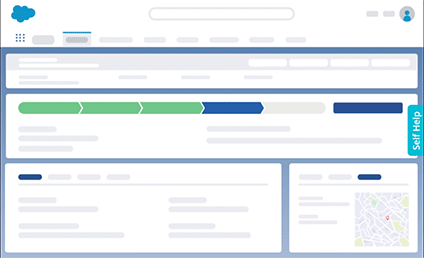
Levi Olmstead


There has been a shift in digital transformation urgency from enterprises over the last few years.
The mindset of customers, employees, partners, and stakeholders has changed. To remain competitive and motivated, organizations are doubling down on digital-first experiences internally to boost the quality of work.
According to a 2022 IDC report, direct digital transformation investments will account for 55% of all information and communications technology (ICT) investments by the end of 2024.
But despite digitization being a priority, the cost of implementing new technologies deters projects from taking off. Let’s look at the factors that influence the cost of digital transformation and what companies can do to build a realistic plan for reducing transformation spending.
The average cost of a digital transformation project is $27.5 million, according to a recent study from International Data Corporation (IDC). IDC predicted global spending on digital transformation initiatives and related costs would reach $2.3 trillion in 2023.
Every transformation project is different, and the total cost of digital transformation will vary depending on your company, its industry, its type of transformation, and other factors.
Remember that every transformation project is different and the total cost of digital transformation will vary depending on your company, its industry, its type of transformation, and a range of other factors.
This is because the scope and magnitude of an organization’s effort will be influenced by:
A 2022 report discovered that over 80 percent of enterprises experienced digital transformation projects that failed or were significantly delayed—the average cost for scaling these projects back already costed companies $4.55 million.
That said, we can see that the cost of digital transformation runs high and requires much preparation beforehand.
If digital transformation costs are so variable, how do organizations prepare for it?
The first thing on the to-do list is to assess what you already have — your workforce, technology stack, growth targets, product roadmap, and customer needs. You want to get as much information as you can about where your organization stands today so you can make the best decisions future-proofing for tomorrow.
Let’s explore the key factors that companies must analyze when building out their digital transformation budget:
What defines digital transformation for your organization?
Fundamentally, digital transformation refers to adopting technology to change or introduce new business processes. This could mean many things, from workflow optimization to complete migration to a new cloud-based data infrastructure for legacy application modernization.
For example, one US bank transformed its omnichannel customer experience to provide more seamless, personalized service.
The bank leveraged a digital account opening solution that had integrations with 15 different third-party systems. The project resulted in a 300% increase in employee productivity, a significant ROI that the organization can use to justify its spending.
Every transformation project will be unique, which leads to high variance in the cost range for transformation projects.
Organizations can digitize various operations, from workforce management to data security, internal communication, and analytics. Various types of digital applications can drive this change forward, like:
Some digital applications are more costly and complex than others because they’re built on more robust or highly-customized technologies. They can also have a higher price tag if your organization requires a large volume of data storage and processing capacities.
Cost will also vary depending on the need for data migration between your legacy system to your new platform, as well as things such as consulting, technical support, outside training, and more.
Your digital transformation efforts are only effective if employees and customers are equipped with the knowledge required to maximize these new systems. That’s why reskilling training and technology enablement is so critical to ensure digital transformation success.
To ensure the most ROI, you need a plan to roll out your new technology carefully so it doesn’t disrupt existing workflows and overwhelm users. If your team and customers are unprepared, resistant to change, and use new systems incorrectly, you’ll incur additional costs troubleshooting errors and retraining them repeatedly.
From 2021 to 2022, organizations in the US spent a total of over $100 billion on employee training. Over 70% of companies had intended to purchase new learning management systems and online learning tools in the coming year.
Industries like healthcare, financial services, and manufacturing often need more comprehensive digital transformation efforts that lead to higher costs. All projects must account for specific regulations and guidelines, supply chain dependencies, and niche talent.
Take contract manufacturers as an example. These organizations had to completely redefine their services during and after COVID-19 to keep clients happy despite volatile supply chains and long wait times for parts and materials.
Today, companies can digitize their product development processes by working with contract manufacturers who offer features like client portals, market monitoring, and real-time inventory tracking. Adopting this digitization for high-volume or high-tech production can be more expensive than industries that don’t require this level of scale and precision.
Organizations with more end-users — employees, partners, or customers — must implement more robust systems and training initiatives. Migrating 100 employees to a new CRM system will be much less resource-intensive than migrating 1,000 employees. You’ll be managing more workflows, data, and of course, questions from users who are unfamiliar with new systems and processes.
Hays is a global recruiting group with over 11,000 employees worldwide. They also have 24 different internal business applications that their employees must use correctly and consistently to ensure high-quality candidate placements for their clients.
To overcome the digital transformation challenges of migrating and implementing new digital applications and processes, the company leveraged Whatfix’s digital adoption platform (DAP) to provide in-app guidance and on-demand self-help to drive end-user adoption and support the flow of work.

Working with IT experts to drive digital transformation forward is a common strategy for those without the in-house capabilities to manage the complexities of these projects. Partnering with consultants and third-party services can be expensive depending on the scope of services that are being requested.
Organizations may opt to work with digital transformation consultant companies to build an IT strategy or have a more hands-on partnership where they get help deploying specific software and communicating with employees.
The cost of consulting services will be influenced by factors like:
Factors like poor tech stack integrations, faulty data, and incorrect platform usage can cause bugs and errors that bring your entire operations to a halt. When this happens, companies will have to take on additional costs to troubleshoot systems, rebuild parts of their tech stack, and compensate clients who may have been negatively affected by the downtime.
Even without any ongoing digital transformation projects, a major occurrence of downtime can hurt your operations and brand reputation. This means companies have more to account for on top of the regular cost of a digital transformation project.
An infamous example of system downtime happened in 2017 when an 11-hour IT outage impacted more than 200 Delta Airlines flights. The outage was caused by outdated computer infrastructure and cost Delta $150 million. Delta had to accelerate its original plans to upgrade its reservation booking system and widen the project scope to clean up the mess it made.
Despite digital transformation being one of the more expensive projects a company can embark on, there are many ways to optimize new technology rollout for more efficient spending.
John Rossman, author of ‘The Amazon Way’, writes, “you can’t transform’ if you don’t have a definition for the future state.”
He calls this the process of working backward, in which companies start by envisioning their ideal future and then decide how they might accomplish that future. Applying this preparation method can help you build an effective and realistic digital transformation roadmap for your current strengths and capabilities.
Before pursuing a digital transformation strategy, list and analyze all your existing business processes so you know exactly what you need to optimize to reach your targets. Conducting this audit will point you toward opportunities and gaps you should address now and in the future.
With this insight, you can target your investments into the most impactful parts of your operations instead of overspending and spreading your resources too thin.
Every organization has its definition of success in digital transformation. Before spending on new tools and talent, ensure that all stakeholders are aligned with the goals of your project. This also means you must define KPIs that can tie your project back to tangible business goals, whether revenue, product adoption, customer retention, or employee productivity.
How can you build your transformation strategy around the right business goals?
McKinsey describes digital transformation as a cycle that spans three categories — each with the potential to bring in transformative results for your business:
A digital adoption platform helps you lower the cost of digital transformation by automating processes for creating and deploying user training and support. Onboarding and educating new users is an effort that involves lots of moving parts, like:
Digital adoption platforms like Whatfix allows companies to go beyond static training courses and virtual classrooms. Instead, you can provide contextual learning for users by implementing in-app experiences like guided product walkthroughs, onboarding checklists, and tool tips.
Interactive and on-demand training content helps you save time and cost that would otherwise be spent on operations like scheduling and organizing training sessions, dedicating customer support resources to answer repetitive queries, and updating and maintaining existing documentation.
For instance, Sentry used Whatfix’s digital adoption platform to automate content creation for moment-of-need training and support across eight business applications. In 12 months, they had seen over $950,000 in ROI from all their time savings.

To ensure the most ROI from your digital transformation, you need tools to help you monitor how users are engaging with new digital tools and processes. Here are a few product adoption metrics you can look out to better understand your user behavior:
With product analytics tools, you can track user interactions and identify friction points in their product journey. For example, high drop-off rates in your onboarding checklist can signal issues like lengthy onboarding processes and unclear product copy.
When Hays implemented Whatfix, it leveraged its product analytics tool to ensure that guided workflows saw good levels of engagement and completion. They discovered that users had viewed their interactive software walkthroughs over 400 times. This can help organizations drill down on user FAQs and implement targeted UX improvements.
The most effective way to ensure team member adoption in digital transformation efforts is by giving them visibility into project goals and timelines that ultimately impact how they work.
Change management will be complex if employees feel blindsided by new processes — even the best software solutions in the market can be disruptive if teams aren’t given ample time to prepare for it.
Communicate with them about potential learning curves for new tools and skills they need to dedicate their time to learning. In The Digital Leader newsletter, Rossman says leaders must “create a digitally-transformed vision for your brand, culture, customer experience, and business model.”
This gets employees excited, motivated, and more importantly, aligned with why digitization needs to happen. “Create consistent communication points about the digital journey,” he adds.
With a digital adoption platform, organizations can scale technology adoption and user training with personalized in-app support content. Whatfix helps companies streamline and automate content creation, implementation, and tracking. Customize and deploy in-app task lists, step-by-step flows, and contextual product walkthroughs to help new users become more proficient with digital tools.
Optimize your digital transformation budget with robust tools to analyze end-user engagement and iterate on training resources for more success. Whatfix empowers you with an intuitive, no-code environment that bridges the gap between your users and new technology platforms.
Thank you for subscribing!